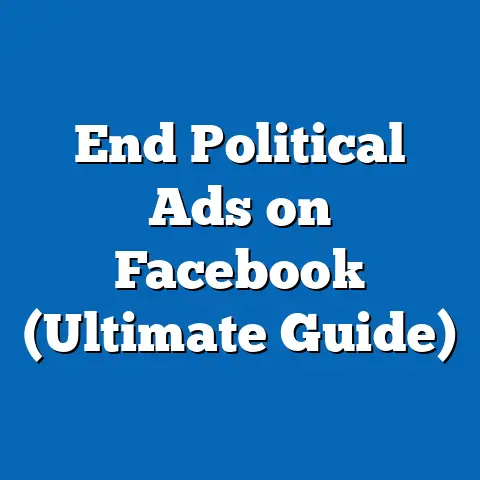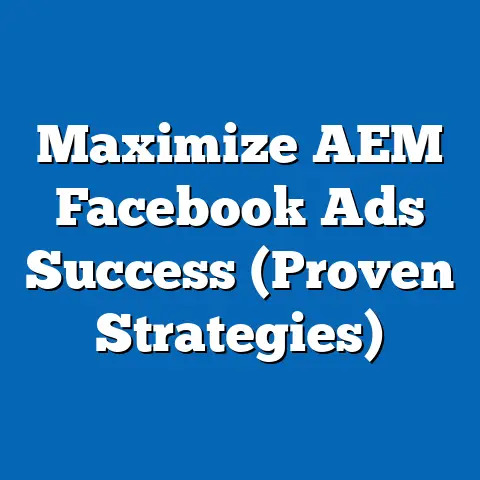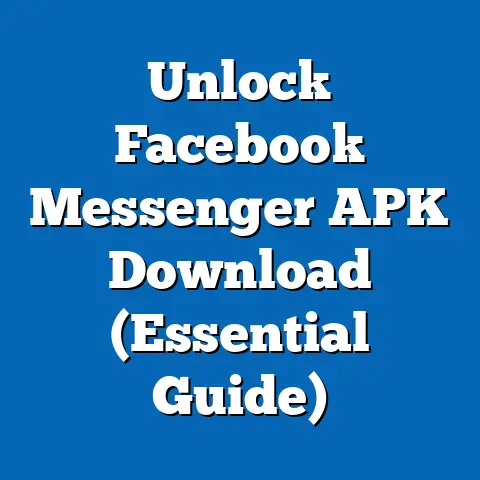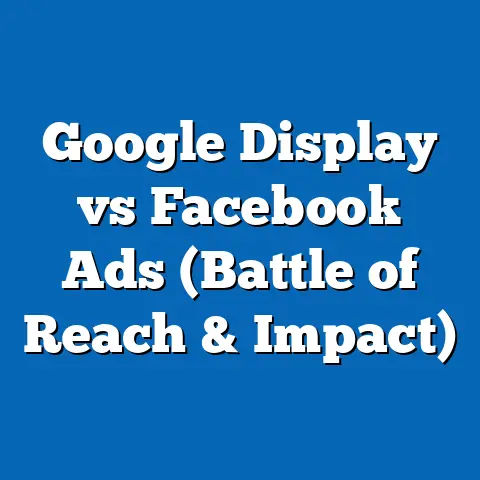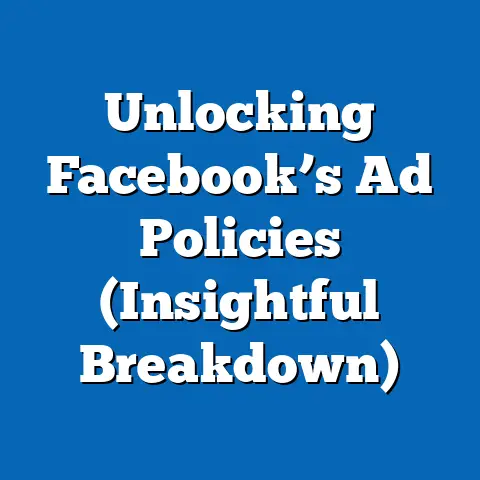Revealing Facebook Clicks (Insightful Analytics Revealed)
In today’s dynamic digital landscape, the power of Facebook advertising is undeniable. But simply throwing ads into the void and hoping for the best is a recipe for wasted budget and lackluster results. The real magic happens when you blend creative content with data-driven strategies, creating a synergy that amplifies your message and connects with your audience on a deeper level. Think of it as the perfect marriage of art and science; where emotional appeal meets analytical insights to drive engagement and, ultimately, conversions.
I’ve seen countless campaigns struggle because they lacked this crucial balance. I remember working with a local bakery trying to promote their new line of vegan pastries. They had beautiful photos and heartwarming stories, but their targeting was all over the place. They were essentially shouting into a crowd, hoping someone would hear them. It wasn’t until we started diving deep into Facebook’s analytics, understanding who was actually clicking on their ads, and then tailoring the message accordingly, that we saw a significant shift. We learned that their ideal customers were not just vegans, but also health-conscious individuals interested in sustainable living. Refined targeting, coupled with compelling visuals, dramatically boosted their click-through rates and sales.
This experience underscored the importance of understanding Facebook clicks and analytics. It’s not just about the number of clicks you get; it’s about understanding who is clicking, why they’re clicking, and what that tells you about your campaign’s effectiveness. This article is your guide to unlocking the secrets hidden within Facebook clicks. I’ll take you on a journey from the basic definitions to advanced analytical techniques, showing you how to transform raw data into actionable insights that can revolutionize your advertising strategies.
The Basics of Facebook Clicks
So, what exactly are Facebook clicks, and why do they hold such significance in the world of online advertising? In simple terms, a Facebook click is any instance where a user interacts with your ad by clicking on it. However, the devil is in the details, as there are various types of clicks, each telling a different story about user engagement.
-
Link Clicks: These are the most straightforward type of click. They represent users who clicked on a link within your ad that directs them to a specific destination, such as your website, landing page, or app store. Link clicks are often the primary objective of many advertising campaigns, as they indicate a direct interest in learning more or taking action.
-
Engagement Clicks: This category encompasses clicks related to engaging with the ad itself, such as liking the ad, commenting on it, sharing it with their network, or clicking to see more details. While not as direct as link clicks, engagement clicks are crucial for building brand awareness and fostering a sense of community around your product or service.
-
Outbound Clicks: These track clicks that lead users away from Facebook entirely. This is important for understanding where your traffic is being directed and assessing the effectiveness of your call-to-action.
Link Clicks: These are the most straightforward type of click. They represent users who clicked on a link within your ad that directs them to a specific destination, such as your website, landing page, or app store. Link clicks are often the primary objective of many advertising campaigns, as they indicate a direct interest in learning more or taking action.
Engagement Clicks: This category encompasses clicks related to engaging with the ad itself, such as liking the ad, commenting on it, sharing it with their network, or clicking to see more details. While not as direct as link clicks, engagement clicks are crucial for building brand awareness and fostering a sense of community around your product or service.
Outbound Clicks: These track clicks that lead users away from Facebook entirely. This is important for understanding where your traffic is being directed and assessing the effectiveness of your call-to-action.
Understanding these different types of clicks is crucial because they provide a nuanced view of user behavior. A high number of engagement clicks might indicate that your ad resonates with your audience on an emotional level, even if they aren’t immediately clicking through to your website. On the other hand, a high number of link clicks suggests that your ad is effectively driving traffic to your desired destination.
One of the most important metrics related to Facebook clicks is the Click-Through Rate (CTR). This is calculated by dividing the number of clicks your ad receives by the number of times it’s shown (impressions), expressed as a percentage.
CTR = (Number of Clicks / Number of Impressions) x 100
For example, if your ad receives 100 clicks after being shown 10,000 times, your CTR would be 1%.
A higher CTR generally indicates that your ad is relevant and engaging to your target audience. However, it’s important to remember that CTR is just one piece of the puzzle. A high CTR doesn’t necessarily guarantee conversions or sales. You also need to consider the quality of the traffic you’re driving to your website and whether your landing page is optimized for conversions.
Clicks are also directly related to Facebook’s advertising model. Facebook operates on a bidding system, where advertisers compete for ad placements based on factors like budget, targeting, and ad quality. Clicks often play a role in determining the cost of your ads, especially if you’re using a bidding strategy focused on optimizing for clicks (such as cost-per-click or CPC bidding). The more relevant and engaging your ad is, the more likely it is to generate clicks, which can improve your ad’s quality score and lower your overall advertising costs.
Key Takeaway: Understanding the different types of Facebook clicks and the significance of CTR is crucial for evaluating the effectiveness of your ad campaigns and optimizing your bidding strategies.
Analyzing Facebook Clicks
Now that we’ve covered the basics, let’s dive into the analytical tools provided by Facebook for tracking and interpreting click data. The primary tool for this is the Facebook Ads Manager, a comprehensive platform that allows you to create, manage, and analyze your ad campaigns.
Within Ads Manager, you’ll find a wealth of data related to your ad performance, including detailed information about clicks. Here’s how to navigate and interpret this data effectively:
-
Accessing Click Data: In Ads Manager, navigate to the campaign, ad set, or individual ad you want to analyze. You’ll see a table displaying key metrics, including impressions, reach, clicks (broken down by type), CTR, CPC, and conversion rates.
-
Customizing Columns: You can customize the columns displayed in the table to focus on the metrics that are most important to you. For example, if you’re primarily interested in link clicks, you can add a column specifically for that metric.
-
Filtering and Segmentation: Use the filtering and segmentation options to drill down into your data and identify trends and patterns. For example, you can filter your data by age, gender, location, or device to see how different segments of your audience are interacting with your ads.
-
Analyzing Trends Over Time: Use the date range selector to analyze your click data over time. This can help you identify seasonal trends, track the impact of changes you’ve made to your campaigns, and assess the overall performance of your ads.
Accessing Click Data: In Ads Manager, navigate to the campaign, ad set, or individual ad you want to analyze. You’ll see a table displaying key metrics, including impressions, reach, clicks (broken down by type), CTR, CPC, and conversion rates.
Customizing Columns: You can customize the columns displayed in the table to focus on the metrics that are most important to you. For example, if you’re primarily interested in link clicks, you can add a column specifically for that metric.
Filtering and Segmentation: Use the filtering and segmentation options to drill down into your data and identify trends and patterns. For example, you can filter your data by age, gender, location, or device to see how different segments of your audience are interacting with your ads.
Analyzing Trends Over Time: Use the date range selector to analyze your click data over time. This can help you identify seasonal trends, track the impact of changes you’ve made to your campaigns, and assess the overall performance of your ads.
Interpreting Key Metrics:
-
CTR (Click-Through Rate): As mentioned earlier, CTR is a key indicator of ad relevance. A high CTR suggests that your ad is resonating with your audience, while a low CTR might indicate that your targeting is off or that your ad copy and visuals need improvement. Industry benchmarks for CTR vary depending on the industry and ad objective, but a good starting point is to aim for a CTR of 1% or higher.
-
CPC (Cost Per Click): CPC represents the average cost you pay for each click on your ad. A lower CPC indicates that your ad is efficient at generating clicks, while a high CPC might suggest that you need to optimize your bidding strategy or improve your ad quality. Factors influencing CPC include competition, targeting, and ad relevance.
-
Conversion Rate: This metric measures the percentage of users who click on your ad and then complete a desired action, such as making a purchase, filling out a form, or downloading an app. A high conversion rate indicates that your ad is effectively driving qualified traffic to your website and that your landing page is optimized for conversions.
CTR (Click-Through Rate): As mentioned earlier, CTR is a key indicator of ad relevance. A high CTR suggests that your ad is resonating with your audience, while a low CTR might indicate that your targeting is off or that your ad copy and visuals need improvement. Industry benchmarks for CTR vary depending on the industry and ad objective, but a good starting point is to aim for a CTR of 1% or higher.
CPC (Cost Per Click): CPC represents the average cost you pay for each click on your ad. A lower CPC indicates that your ad is efficient at generating clicks, while a high CPC might suggest that you need to optimize your bidding strategy or improve your ad quality. Factors influencing CPC include competition, targeting, and ad relevance.
Conversion Rate: This metric measures the percentage of users who click on your ad and then complete a desired action, such as making a purchase, filling out a form, or downloading an app. A high conversion rate indicates that your ad is effectively driving qualified traffic to your website and that your landing page is optimized for conversions.
A/B Testing:
One of the most powerful techniques for understanding which ads generate more clicks and why is A/B testing, also known as split testing. This involves creating multiple versions of your ad with slight variations (e.g., different headlines, images, or calls-to-action) and then running them simultaneously to see which version performs best.
Facebook Ads Manager provides built-in tools for A/B testing, allowing you to easily create and compare different ad variations. By analyzing the click data for each version, you can identify the elements that are most effective at driving clicks and then use those insights to optimize your future ads.
Real-Life Example:
I once worked with an e-commerce client selling handmade jewelry. They were struggling to generate clicks on their Facebook ads, despite having beautiful product photos. We decided to run an A/B test comparing two different headlines:
- Headline A: “Shop Our Handmade Jewelry Collection”
- Headline B: “Unique Handmade Jewelry – Crafted with Love”
After running the test for a week, we found that Headline B generated significantly more clicks than Headline A. This suggested that users were more drawn to the emotional appeal of the “crafted with love” message. We then used this insight to optimize the headlines of all their other ads, resulting in a significant increase in overall click-through rates.
Key Takeaway: Facebook Ads Manager provides a wealth of data for analyzing click performance. By understanding key metrics like CTR, CPC, and conversion rates, and by utilizing A/B testing, you can gain valuable insights into what resonates with your audience and optimize your ads for maximum impact.
Factors Influencing Clicks on Facebook Ads
Now that we’ve explored how to analyze click data, let’s delve into the various factors that can influence the number of clicks your ads receive. Understanding these factors is crucial for creating ads that are not only visually appealing but also strategically designed to capture attention and drive engagement.
-
Ad Copy and Visuals: The ad copy and visuals are the first things users see when they encounter your ad. Therefore, they play a critical role in capturing their attention and persuading them to click.
-
Compelling Headlines: Your headline should be concise, attention-grabbing, and relevant to your target audience. Use strong keywords, ask a question, or make a bold statement to pique their interest.
-
Engaging Images and Videos: Use high-quality images and videos that are visually appealing and relevant to your product or service. Consider using lifestyle images that show your product in action or videos that tell a compelling story.
-
Clear Call-to-Action (CTA): Your CTA should clearly tell users what you want them to do next, whether it’s “Shop Now,” “Learn More,” or “Sign Up.” Use action-oriented language and make your CTA button stand out visually.
-
-
Targeting: Effective targeting is essential for ensuring that your ads are shown to the right people. Facebook provides a wide range of targeting options, allowing you to reach users based on demographics, interests, behaviors, and more.
-
Demographics: Target users based on age, gender, location, education, and other demographic factors.
-
Interests: Target users based on their interests, hobbies, and activities.
-
Behaviors: Target users based on their online behavior, such as their purchase history, website visits, and app usage.
-
Custom Audiences: Create custom audiences based on your existing customer data, such as email lists or website visitors.
-
Lookalike Audiences: Create lookalike audiences based on your existing custom audiences. This allows you to reach new users who share similar characteristics with your best customers.
-
-
Timing and Frequency: The timing and frequency of your ads can also impact their performance.
-
Ad Placement: Facebook offers various ad placements, including the news feed, right column, Instagram, and Audience Network. Experiment with different placements to see which ones generate the most clicks for your target audience.
-
Ad Scheduling: Schedule your ads to run during the times when your target audience is most active on Facebook.
-
Frequency Capping: Set a frequency cap to limit the number of times a user sees your ad. This can prevent ad fatigue and improve your overall click-through rates.
-
Ad Copy and Visuals: The ad copy and visuals are the first things users see when they encounter your ad. Therefore, they play a critical role in capturing their attention and persuading them to click.
-
Compelling Headlines: Your headline should be concise, attention-grabbing, and relevant to your target audience. Use strong keywords, ask a question, or make a bold statement to pique their interest.
-
Engaging Images and Videos: Use high-quality images and videos that are visually appealing and relevant to your product or service. Consider using lifestyle images that show your product in action or videos that tell a compelling story.
-
Clear Call-to-Action (CTA): Your CTA should clearly tell users what you want them to do next, whether it’s “Shop Now,” “Learn More,” or “Sign Up.” Use action-oriented language and make your CTA button stand out visually.
Compelling Headlines: Your headline should be concise, attention-grabbing, and relevant to your target audience. Use strong keywords, ask a question, or make a bold statement to pique their interest.
Engaging Images and Videos: Use high-quality images and videos that are visually appealing and relevant to your product or service. Consider using lifestyle images that show your product in action or videos that tell a compelling story.
Clear Call-to-Action (CTA): Your CTA should clearly tell users what you want them to do next, whether it’s “Shop Now,” “Learn More,” or “Sign Up.” Use action-oriented language and make your CTA button stand out visually.
Targeting: Effective targeting is essential for ensuring that your ads are shown to the right people. Facebook provides a wide range of targeting options, allowing you to reach users based on demographics, interests, behaviors, and more.
-
Demographics: Target users based on age, gender, location, education, and other demographic factors.
-
Interests: Target users based on their interests, hobbies, and activities.
-
Behaviors: Target users based on their online behavior, such as their purchase history, website visits, and app usage.
-
Custom Audiences: Create custom audiences based on your existing customer data, such as email lists or website visitors.
-
Lookalike Audiences: Create lookalike audiences based on your existing custom audiences. This allows you to reach new users who share similar characteristics with your best customers.
Demographics: Target users based on age, gender, location, education, and other demographic factors.
Interests: Target users based on their interests, hobbies, and activities.
Behaviors: Target users based on their online behavior, such as their purchase history, website visits, and app usage.
Custom Audiences: Create custom audiences based on your existing customer data, such as email lists or website visitors.
Lookalike Audiences: Create lookalike audiences based on your existing custom audiences. This allows you to reach new users who share similar characteristics with your best customers.
Timing and Frequency: The timing and frequency of your ads can also impact their performance.
-
Ad Placement: Facebook offers various ad placements, including the news feed, right column, Instagram, and Audience Network. Experiment with different placements to see which ones generate the most clicks for your target audience.
-
Ad Scheduling: Schedule your ads to run during the times when your target audience is most active on Facebook.
-
Frequency Capping: Set a frequency cap to limit the number of times a user sees your ad. This can prevent ad fatigue and improve your overall click-through rates.
Ad Placement: Facebook offers various ad placements, including the news feed, right column, Instagram, and Audience Network. Experiment with different placements to see which ones generate the most clicks for your target audience.
Ad Scheduling: Schedule your ads to run during the times when your target audience is most active on Facebook.
Frequency Capping: Set a frequency cap to limit the number of times a user sees your ad. This can prevent ad fatigue and improve your overall click-through rates.
Tailoring ads to different demographics is crucial for maximizing click rates. For example, an ad targeting millennials might use a more casual tone and incorporate humor, while an ad targeting baby boomers might focus on trust and reliability.
Key Takeaway: Understanding the factors that influence clicks on Facebook ads is essential for creating effective campaigns. By optimizing your ad copy, visuals, targeting, and timing, you can significantly increase your click-through rates and drive more traffic to your website.
Insights from Click Analytics
Analyzing click data isn’t just about tracking numbers; it’s about extracting actionable insights that can inform your future advertising strategies. Here are some key insights you can glean from your click analytics:
-
CTR Trends and Patterns: Monitor your CTR over time to identify trends and patterns. Are your CTRs consistently high, or do they fluctuate? If they fluctuate, what factors might be contributing to those changes? For example, a sudden drop in CTR might indicate that your ad is becoming stale or that your targeting is no longer effective.
-
Audience Insights: Analyze your click data by demographic segment to gain a deeper understanding of your audience. Which age groups, genders, and locations are most likely to click on your ads? What are their interests and behaviors? Use these insights to refine your targeting and create ads that are more relevant to specific audience segments.
-
Creative Performance: Compare the click performance of different ad creatives to identify which elements are most effective at driving clicks. Which headlines, images, and calls-to-action resonate most with your audience? Use these insights to inform your future creative decisions.
CTR Trends and Patterns: Monitor your CTR over time to identify trends and patterns. Are your CTRs consistently high, or do they fluctuate? If they fluctuate, what factors might be contributing to those changes? For example, a sudden drop in CTR might indicate that your ad is becoming stale or that your targeting is no longer effective.
Audience Insights: Analyze your click data by demographic segment to gain a deeper understanding of your audience. Which age groups, genders, and locations are most likely to click on your ads? What are their interests and behaviors? Use these insights to refine your targeting and create ads that are more relevant to specific audience segments.
Creative Performance: Compare the click performance of different ad creatives to identify which elements are most effective at driving clicks. Which headlines, images, and calls-to-action resonate most with your audience? Use these insights to inform your future creative decisions.
Leveraging these insights to refine future ad campaigns involves a continuous cycle of testing, analysis, and optimization. Don’t be afraid to experiment with different ad variations, targeting options, and bidding strategies. Continuously monitor your click data and use what you learn to improve your ads over time.
Continuous monitoring and adaptation are essential for long-term success. The Facebook advertising landscape is constantly evolving, so it’s important to stay up-to-date with the latest trends and best practices. Regularly review your click data, experiment with new strategies, and adapt your campaigns as needed to stay ahead of the curve.
Key Takeaway: Click analytics provide valuable insights into your audience, creative performance, and overall campaign effectiveness. By leveraging these insights to refine your targeting, creative, and bidding strategies, you can continuously improve your ad performance and achieve your advertising goals.
Conclusion
Understanding Facebook clicks is more than just knowing what they are; it’s about understanding the story they tell about your audience, your creative, and your overall advertising strategy. By embracing both the creative and analytical aspects of Facebook advertising, you can unlock the full potential of this powerful platform and achieve optimal results. So, dive into your data, experiment with new strategies, and never stop learning. The world of Facebook advertising is constantly evolving, and the best way to succeed is to stay curious, stay adaptable, and always be willing to learn from your clicks.

